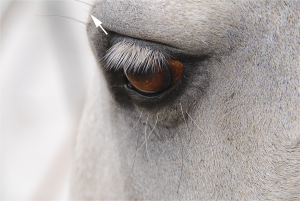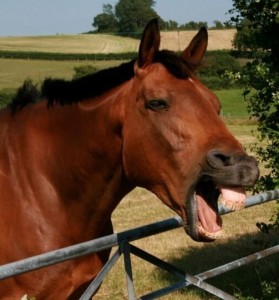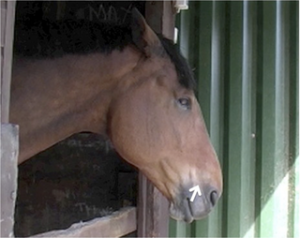“Horses are undoubtedly emotional animals,” Jennifer Wathan, a doctoral researcher at the University of Sussex and one of the study’s authors, said. “But what they feel and how that is expressed is a question that we have yet to pin down.”
Wathan and her colleagues devised a comprehensive coding system to better understand common equine facial actions, which they named EquiFACS (Equine Facial Action Coding System). The original FACS was developed for use in humans. EquiFACS is the first attempt to develop this system for an animal with laterally placed eyes and an elongated face.
“Facial expressions are made up of a number of different complicated movements that overlap in a dynamic way. The Equine Facial Action Coding System gives us a way in which we can make sense of these dynamic and complex forms of communication. Even people who know horses really well sometimes can’t articulate exactly what it is about an expression that they’re seeing. This gives them a way of articulating it.”
Inner brow raiser: Horses tend to raise the inner brow of the eye in negative emotional situations as an expression of sadness or fear. Dogs and humans are known to use a similar action in expressions of surprise, sadness and fear.
Upper lip raiser: This can be an expression of fear in horses and is often combined with a widening of the eyes, increasing the visibility of the whites of the eyes. Cows also have been shown to display this facial action in stressful situations.
Lip corner puller: This subtle movement is generally a gesture of submission in horses, otherwise known as “snapping.” In humans, pulling the corners of the lips is a key component of the smile. The expression is also seen in primates, cats and dogs.
Although previous studies of horses have investigated their facial expressions in specific contexts, e.g. pain, until now there has been no methodology available that documents all the possible facial movements of the horse and provides a way to record all potential facial configurations. This is essential for an objective description of horse facial expressions across a range of contexts that reflect different emotional states. Facial Action Coding Systems (FACS) provide a systematic methodology of identifying and coding facial expressions on the basis of underlying facial musculature and muscle movement. FACS are anatomically based and document all possible facial movements rather than a configuration of movements associated with a particular situation. Consequently, FACS can be applied as a tool for a wide range of research questions. We developed FACS for the domestic horse (Equus caballus) through anatomical investigation of the underlying musculature and subsequent analysis of naturally occurring behaviour captured on high quality video. Discrete facial movements were identified and described in terms of the underlying muscle contractions, in correspondence with previous FACS systems. The reliability of others to be able to learn this system (EquiFACS) and consistently code behavioural sequences was high—and this included people with no previous experience of horses. A wide range of facial movements were identified, including many that are also seen in primates and other domestic animals (dogs and cats). EquiFACS provides a method that can now be used to document the facial movements associated with different social contexts and thus to address questions relevant to understanding social cognition and comparative psychology, as well as informing current veterinary and animal welfare practices.
























